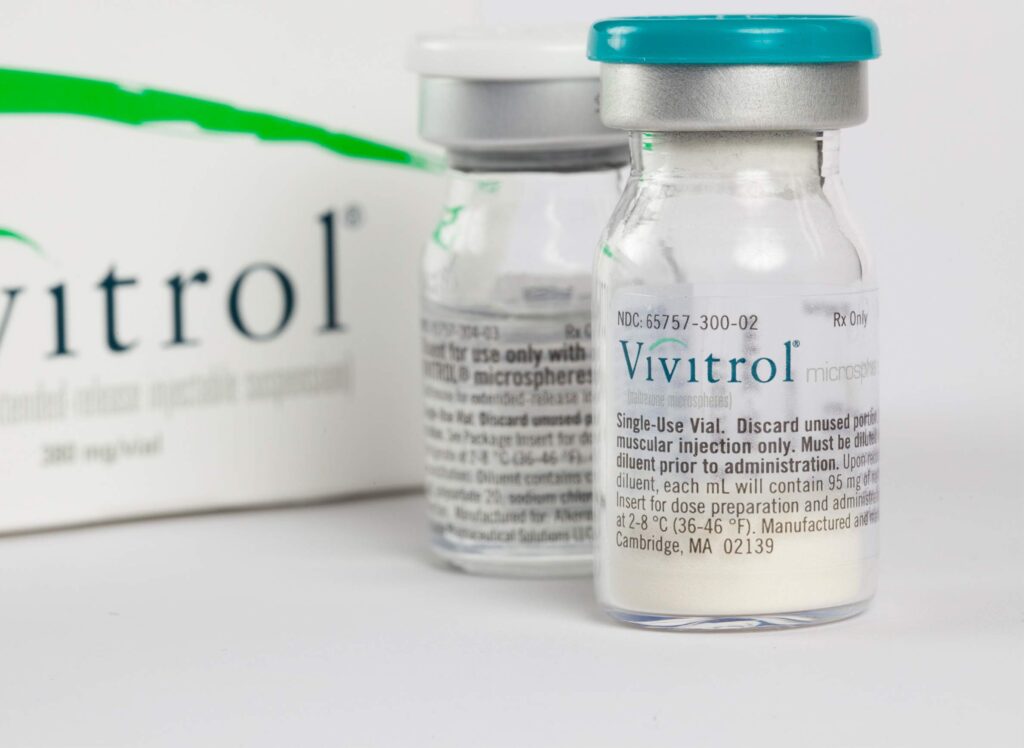Home > ASME Articles > Faster Approach for Starting Extended-Release Naltrexone for OUD Effective

What’s the Question?
Effective medications to treat opioid use disorder (OUD) include buprenorphine, methadone, and extended-release injectable naltrexone (XR-naltrexone). All three promote abstinence from illicit opioid use and reduce the risk of death from overdose. A major barrier to the use of XR-naltrexone, however, is the need for patients to completely abstain from opioid use for 7-10 days before starting treatment to avoid sudden, harsh withdrawal. During this lengthy period, patients are extremely vulnerable to uncomfortable withdrawal symptoms, cravings, and dropping out of treatment with subsequent risk of overdose and death.
Finding a way to shorten this initiation period would make it much easier for patients to choose XR-naltrexone. This study, CTN-0097 (the SWIFT trial), looked at a rapid XR-naltrexone initiation process compared to usual care at community-based inpatient addiction treatment units.
How Was This Study Conducted?
The SWIFT trial was a 70-week study conducted at 6 community inpatient addiction treatment programs across the United States.
Units using the standard induction procedure (SP) were randomly assigned at 14-week intervals to use the rapid procedure (RP) instead. The standard procedure involved a 5-day buprenorphine taper followed by a 7- to 10-day opioid-free period. The rapid procedure was defined as 1 day of buprenorphine at a minimum necessary dose, 1 opioid-free day, and ascending low doses of oral naltrexone plus supportive medications like clonidine, clonazepam, and antiemetics to treat opioid withdrawal symptoms.
Demographics of Participants
A total of 415 participants with opioid use disorder were enrolled (only 10.4% of all patients entering treatment across participating sites opted to attempt XR-naltrexone treatment). The mean age was 33.6 years. 205 (49.4%) were male. 54 (13%) were Black, 91 (21.9%) were Hispanic, 290 (69.9%) were White, and 22 (5.3%) were multiracial.
What Did Researchers Find Out?
In the RP group, 141 of 225 individuals (62.7%) received XR-naltrexone compared with 68 of 190 (35.8%) in the SP group, suggesting that the rapid procedure was more effective at successfully starting people on XR-naltrexone compared to the standard procedure.
For the 206 participants who did not receive a first dose of XR-naltrexone, the most common reasons given were “chose to leave the inpatient unit early” (RP group: 61.9%, SP group: 70.5%), “decided to begin buprenorphine or methadone” instead (RP: 21.4%, SP: 20.5%) and “withdrawal symptoms too uncomfortable” (RP: 14.3%, SP: 4.9%).
Safety and adverse events were low for both groups but were more frequent in the RP group compared to the SP group. Some of the safety and adverse events reported included falls, medical complications, and psychiatric or mental status issues.
What Are the Implications for the Workforce?
This trial provides several pieces of noteworthy information. First, a rapid procedure for getting patients started on XR-naltrexone not only worked much better than the usual procedure, but it spared patients a lot of suffering in the process, in part because of the use of aggressive oral hydration and supportive medications for withdrawal symptoms that helped mitigate those symptoms.
However, though safety events related to withdrawal were infrequent, they were more common with the rapid procedure, something clinicians should watch for when using this new process. The RP requires close medical monitoring, but due to its shorter duration, it may be more cost-effective and a better fit within constraints on the duration of inpatient stays.